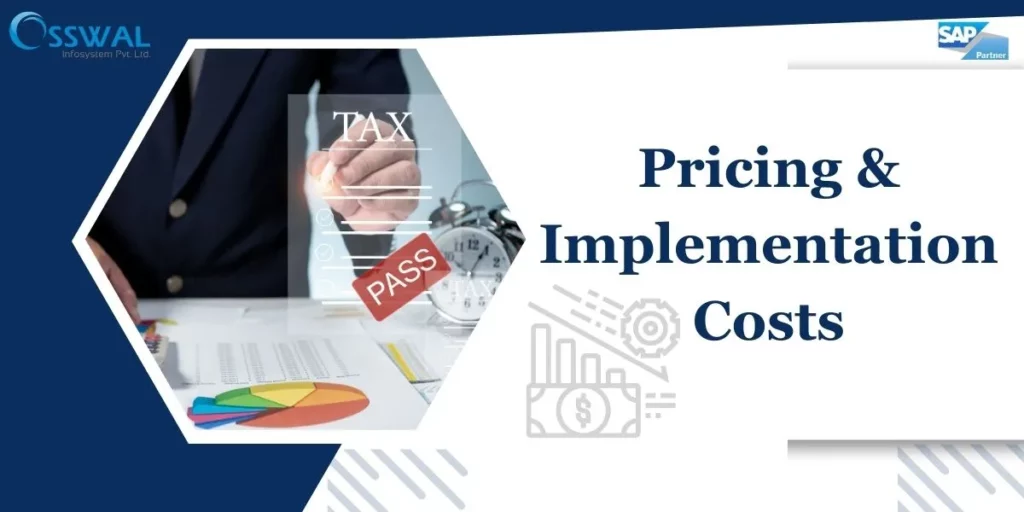
SAP Business One vs Tally: Which is the Right Choice for Your Business?
When it comes to managing business finances and operations, two names often dominate the conversation—SAP Business One and Tally. Both tools aim to simplify accounting and business processes, but they serve very different purposes, features, and growth strategies.
If you are a growing business looking to move beyond basic accounting and adopt full-scale ERP functionality, understanding the difference between these two platforms is crucial. Choosing the right solution can directly impact your efficiency, scalability, and bottom line.
In this article, we’ll dive deep into the SAP B1 vs Tally debate, comparing features, scalability, and overall business impact to help you make an informed decision.
Overview of SAP Business One and Tally
What is Sap Business One?
SAP B1 is a comprehensive ERP solution designed specifically for small and medium-sized enterprises (SMEs). Unlike traditional accounting software, SAP Business One delivers an all-in-one platform that integrates financials, inventory, procurement, sales, CRM, and analytics. This holistic approach enables businesses to automate processes, access real-time data, and make informed decisions that drive growth.
Built for businesses with long-term expansion goals, this ERP solution supports multi-location operations, multi-currency transactions, and industry-specific modules such as manufacturing, distribution, and retail.
What is Tally?
Tally is primarily an accounting software widely used in India for bookkeeping, tax compliance, and generating basic financial reports. It is known for its simplicity and cost-effectiveness, making it a popular choice for small businesses and startups with minimal automation requirements.
While Tally has evolved to include GST compliance and some inventory features, it remains focused on financial transactions rather than complete enterprise resource planning.
Key Differences Between SAP B1 and Tally
Choosing between these two solutions depends on your business size, complexity, and growth goals. Here are the major differences:
1. Scope and Functionality
- SAP B1: Goes beyond accounting to include inventory control, purchasing, production planning, CRM, and advanced analytics. It provides a unified platform where all business data flows seamlessly, reducing errors and improving decision-making.
- Tally: Primarily focuses on accounting and GST compliance. Advanced capabilities like production planning or CRM require third-party integrations or add-ons.
2. Scalability
- SAP B1: Built for growing businesses, SAP B1 supports multi-company, multi-currency, and multi-location operations, making it ideal for organizations planning to expand.
- Tally: Suitable for small businesses with limited operations. Scaling beyond a certain point requires extensive customization and third-party tools.
3. Real-Time Reporting
- SAP B1: Offers advanced reporting tools, real-time dashboards, and predictive analytics, allowing businesses to make data-driven decisions quickly.
- Tally: Provides essential financial reports like P&L and balance sheets but lacks interactive dashboards and predictive insights.
4. Cloud and Mobility
- SAP B1: Available on cloud, on-premise, and hybrid models, with mobile apps for managers and field teams.
- Tally: Traditionally a desktop-based application. While remote access options exist, they require additional configurations and cost.
Advantages of SAP B1 Over Tally
Integrated Business Management
SAP B1 eliminates data silos by combining multiple functions—finance, inventory, CRM, and reporting—on a single platform. This integrated approach ensures smooth workflows and faster decision-making.
Automation and Compliance
Unlike Tally, which depends heavily on manual entries, SAP B1 automates key processes such as purchase orders, inventory updates, and tax compliance, reducing the chances of human error and saving valuable time.
Industry-Specific Solutions
SAP B1 provides industry-tailored modules for manufacturing, distribution, retail, and professional services. This ensures businesses get the right tools for their unique processes without depending on external add-ons.
Better Decision Support
With its built-in business intelligence tools, SAP B1 enables companies to track KPIs, forecast trends, and identify growth opportunities—something Tally cannot offer at an advanced level.
When Should You Choose SAP Business One?
Consider SAP B1 if your business:
- Needs a complete ERP solution beyond accounting.
- Plans to expand into multiple locations or international markets.
- Requires real-time reporting, analytics, and dashboards.
- Values automation and wants to reduce manual work.
When is Tally Enough?
Tally is a good option if:
- Your business is focused only on basic accounting and GST compliance.
- You operate on a small scale with no immediate plans for expansion.
- Advanced automation or data analytics is not a priority.
However, as your business grows and operations become more complex, you may find Tally restrictive. At this stage, migrating to a scalable solution like SAP Business One ensures smooth growth and digital transformation.
Cost Considerations
While Tally is relatively inexpensive, its limited functionality means businesses often need to invest in third-party tools or customizations for additional features. SAP Business One, though initially a higher investment, delivers a better return on investment (ROI) over time by integrating processes and reducing operational inefficiencies.
Conclusion
Both SAP Business One and Tally have their strengths, but their scope and impact differ significantly. For businesses aiming at growth, efficiency, and digital transformation, SAP B1 emerges as the clear winner.
It’s not just an accounting tool—it’s a complete business management solution that supports automation, real-time insights, and future scalability.
Want to take your business to the next level? Contact Osswal Infosystem today for a personalized SAP B1 demo and discover how it can transform your operations.
Also Read: FMCG Manufacturing: Manual vs SAP Business One Efficiency


